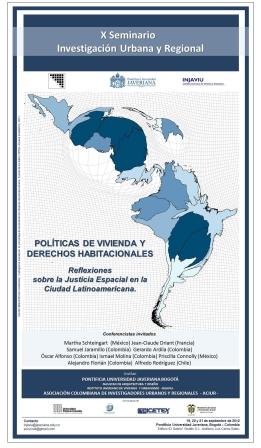Abstract
Las ciudades latinoamericanas sufren procesos de crecimiento espontáneos en amplias porciones de su territorio. Este fenómeno ha dado lugar al surgimiento y consolidación de AHDI, cuyas problemáticas son atendidas a través de procesos de regularización urbanística. El paisaje, en tanto proceso complejo de identidad entre los sujetos y el territorio, es elemento indispensable en la atención de los problemas de estos asentamientos. Las políticas públicas de planeación territorial y de regularización no han sido claras en la atención al paisaje como criterio de intervención. A través de una reflexión conceptual sobre la importancia del paisaje en la regularización, se analiza la inclusión de éste en la política pública de Medellín, concluyendo con una reflexión en torno al paisaje como criterio para la planeación de la ciudad, abordando aspectos conceptuales y metodológicos.
This journal is registered under a Creative Commons Attribution 4.0 International Public License. Thus, this work may be reproduced, distributed, and publicly shared in digital format, as long as the names of the authors and Pontificia Universidad Javeriana are acknowledged. Others are allowed to quote, adapt, transform, auto-archive, republish, and create based on this material, for any purpose (even commercial ones), provided the authorship is duly acknowledged, a link to the original work is provided, and it is specified if changes have been made. Pontificia Universidad Javeriana does not hold the rights of published works and the authors are solely responsible for the contents of their works; they keep the moral, intellectual, privacy, and publicity rights.
Approving the intervention of the work (review, copy-editing, translation, layout) and the following outreach, are granted through an use license and not through an assignment of rights. This means the journal and Pontificia Universidad Javeriana cannot be held responsible for any ethical malpractice by the authors. As a consequence of the protection granted by the use license, the journal is not required to publish recantations or modify information already published, unless the errata stems from the editorial management process. Publishing contents in this journal does not generate royalties for contributors.


